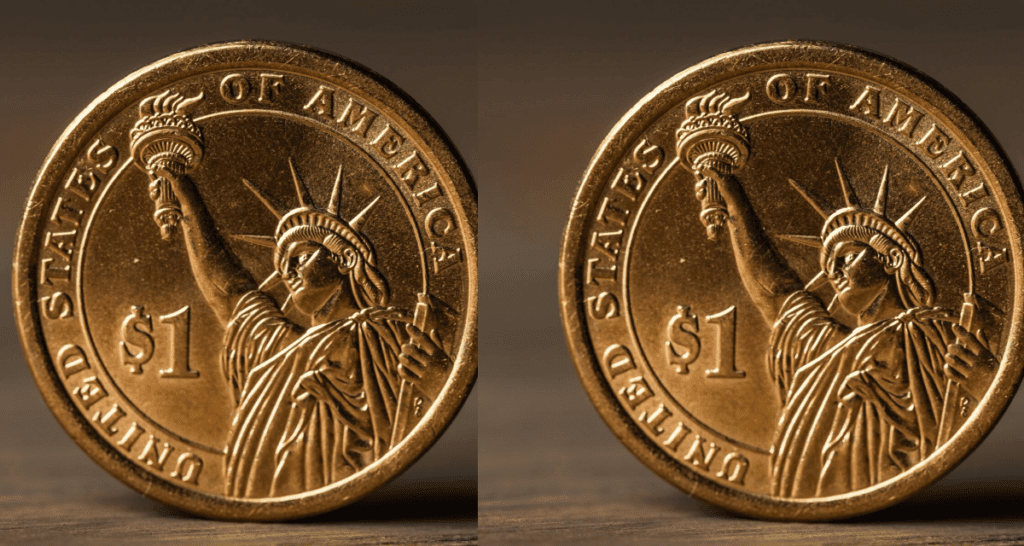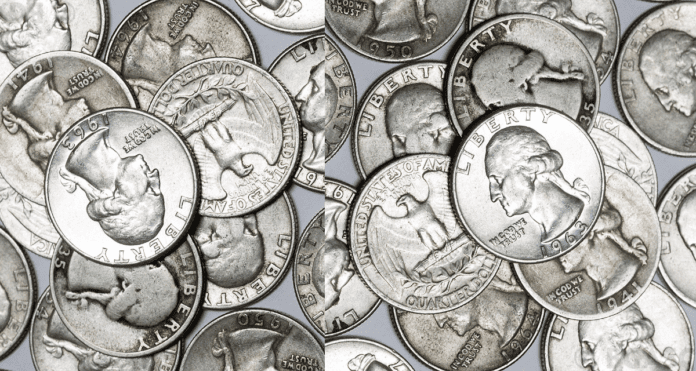Discover the Hidden Value of Dollar Coins and Unearth Your Fortunes!
1. Introduction
Dollar coins have long been an integral part of American currency, yet many people are unaware of the hidden treasures that lie within their collections. While most dollar coins are worth their face value, some possess a rarity and historical significance that elevates their worth to astronomical levels. In this article, we will explore the various types of dollar coins, the factors that influence their value, and the steps you can take to determine if you possess a dollar coin worth money. So, hold on tight as we embark on this thrilling adventure!
2. The History of Dollar Coins
To understand the value of dollar coins, we must first delve into their rich history. The United States dollar coin has evolved over the centuries, mirroring the nation’s growth and development. The journey begins in 1794, with the introduction of the Flowing Hair dollar, followed by several iconic designs such as the Morgan dollar, Peace dollar, Eisenhower dollar, Susan B. Anthony dollar, Sacagawea dollar, and Presidential dollar. Each of these coins has a unique story to tell, making them highly sought after by numismatists and collectors worldwide.
3. Types of Dollar Coins
3.1 Morgan Dollars
The Morgan dollar, minted from 1878 to 1904 and again in 1921, is arguably one of the most popular and widely collected dollar coins. Named after its designer, George T. Morgan, this coin features a captivating obverse design showcasing Lady Liberty and a majestic eagle on the reverse. The Morgan dollar holds immense historical significance and is known for its exceptional silver content, making it a favorite among collectors and investors alike.
3.2 Peace Dollars
Following the conclusion of World War I, the Peace dollar was introduced in 1921 as a symbol of hope and tranquility. Designed by Anthony de Francisci, this coin boasts a stunning portrait of Lady Liberty on the obverse and a majestic perched eagle on the reverse. Peace dollars were minted until 1935 and are highly valued for their artistic beauty, historical context, and silver content.
3.3 Eisenhower Dollars
In honor of President Dwight D. Eisenhower, the Eisenhower dollar was minted from 1971 to 1978. These hefty coins, measuring 38.1mm in diameter, were the first dollar coins to be produced by the United States Mint since the Peace dollar. The obverse features President Eisenhower, while the reverse showcases the Apollo 11 mission insignia, commemorating the successful moon landing in 1969.
3.4 Susan B. Anthony Dollars
The Susan B. Anthony dollar, minted from 1979 to 1981 and again in 1999, holds a special place in American numismatic history. It was the first small-sized dollar coin and featured the iconic suffragist Susan B. Anthony on the obverse. Despite its short production span, the Susan B. Anthony dollar remains an intriguing and collectible coin due to its unique size, composition, and historical significance.
3.5 Sacagawea Dollars
In 2000, the United States Mint introduced the Sacagawea dollar, paying tribute to the Shoshone woman who played a vital role in the Lewis and Clark expedition. These golden-colored coins feature a captivating portrait of Sacagawea on the obverse and various designs representing different aspects of Native American culture on the reverse. Sacagawea dollars are a favorite among collectors due to their distinctive appearance and historical connection.
3.6 Presidential Dollars
The Presidential dollar series, initiated in 2007, aims to honor each U.S. president through a unique design on the obverse. These coins are issued in chronological order of the presidency and have rekindled interest in collecting modern dollar coins. With a distinctive edge lettering and captivating designs, Presidential dollars add a touch of history to any collection.
4. Factors Affecting the Value of Dollar Coins
Determining the value of a dollar coin is no simple task. Several factors come into play, and understanding these variables is crucial for accurately assessing a coin’s worth. Let’s explore the key elements that can influence the value of dollar coins.
4.1 Rarity and Scarcity
As with any collectible item, rarity and scarcity play a significant role in determining value. Coins with low mintages or limited surviving quantities are often highly sought after, driving their prices to new heights. The rarer a dollar coin is, the more likely it is to be worth a substantial amount of money.
4.2 Mint Mark and Year
The mint mark, denoting the location where a coin was minted, can significantly impact its value. Certain mints produced coins in smaller quantities or implemented unique striking techniques, making their coins more desirable to collectors.For example, Morgan dollars minted in Carson City (CC mint mark) or New Orleans (O mint mark) tend to command higher prices due to their lower mintages and historical significance. Additionally, the year of production can also affect a coin’s value. Some years may have lower mintages or unique variations that make them more valuable to collectors.
4.3 Condition and Grade
The condition of a dollar coin plays a crucial role in determining its value. Coins that are well-preserved and exhibit minimal signs of wear or damage are generally more desirable to collectors. The Numismatic Guaranty Corporation (NGC) and Professional Coin Grading Service (PCGS) are reputable organizations that assess a coin’s condition and assign it a grade on the Sheldon scale, ranging from Poor (PO-1) to Perfect Mint State (MS-70). Higher-grade coins often command higher prices due to their superior quality and scarcity.
4.4 Errors and Varieties
Coins with errors or unique varieties can be highly valuable to collectors. These errors can range from striking mistakes to misprints or variations in design elements. For example, a coin with a double die error, where the design appears doubled due to a misalignment during the minting process, can fetch a significant premium. Identifying and researching these errors and varieties can help determine if your dollar coin has added value.
4.5 Historical Significance
Coins that hold historical significance or commemorate important events often attract collectors. For instance, dollar coins minted during significant periods, such as the bicentennial of the United States in 1976, may have special designs or compositions that make them more valuable. Understanding the historical context of a coin can provide insight into its potential worth.
5. Dollar Coins Worth Money: Key Dates and Varieties
Now that we’ve explored the factors that affect a dollar coin’s value, let’s dive into specific key dates and varieties for each type of dollar coin. Keep in mind that the values mentioned are approximate and can vary based on market conditions, demand, and individual coin quality.
5.1 Morgan Dollar Key Dates
- 1878-CC: The first year of issue for Morgan dollars and the Carson City mintmark adds value.
- 1889-CC: A low mintage year with the Carson City mintmark, highly sought after by collectors.
- 1893-S: Considered a key date due to its low mintage and scarcity.
- 1895: Known as the “King of Morgan Dollars,” with a limited mintage and extreme rarity.
- 1903-O: A low mintage year from the New Orleans mint, desired by collectors.
5.2 Peace Dollar Key Dates
- 1921: The first year of issue for Peace dollars, with high relief design and different varieties.
- 1928: A low mintage year, especially for the Philadelphia mint, making it a desirable coin.
- 1934-S: Scarce and sought after by collectors due to its low mintage.
- 1934-D: Another low mintage year, particularly from the Denver mint, increasing its value.
- 1922 High Relief: A unique variety with a higher relief design, highly valued by collectors.
5.3 Eisenhower Dollar Key Dates
- 1971-S Silver: A limited edition silver version minted for collectors, with a higher silver content.
- 1972 Type 2: A variety with a thinner lettering on the reverse, making it rarer than the Type 1.
- 1976-S Silver: Bicentennial issue with a silver composition, appealing to collectors.
- 1978-D: A low mintage year, especially from the Denver mint, making it more valuable.
5.4 Susan B. Anthony Dollar Key Dates
- 1979-S Type 1: The first variety of Susan B. Anthony dollars with a different design on the reverse.
- 1979-S Type 2: A second variety with a modified design on the reverse, rarer than the Type 1.
- 1981-S: A low mintage year, particularly for the San Francisco mint, increasing its value.
- 1999-P: A special issue for collectors, as it marked the end of the Susan B. Anthony dollar series.
5.5 Sacagawea Dollar Key Dates
- 2000-P Cheerios Dollar: A variety discovered in boxes of Cheerios cereal, highly coveted by collectors.
- 2000-P Wounded Eagle: A rare error variety with a damaged eagle on the reverse, fetching a premium.
- 2001-D: A low mintage year, particularly from the Denver mint, making it more desirable.
5.6 Presidential Dollar Key Dates
- 2007-P George Washington: The first coin in the Presidential dollar series, with special edge lettering.
- 2007-W Dolley Madison: A variety with a special burnished finish, released only in numismatic sets.
- 2009-S Proof: A set of four coins honoring the different presidential terms in 2009, popular among collectors.
- 2010-P Abraham Lincoln: A rare double die variety with doubling on the obverse, increasing its value.
6. How to Determine the Value of Dollar Coins
Now that we have explored key dates and varieties, let’s delve into how you can determine the value of your dollar coins. By following these steps, you can gain a better understanding of their potential worth.

6.1 Research and Reference Materials
To determine the value of your dollar coins, it’s essential to conduct thorough research. Utilize reliable reference materials such as coin price guides, books, and online resources dedicated to numismatics. Websites like the Professional Coin Grading Service (PCGS) and Numismatic Guaranty Corporation (NGC) provide valuable information on coin grading, historical context, and current market values.
6.2 Professional Coin Grading Services
For a more accurate assessment of your dollar coins’ condition and grade, consider utilizing the services of professional coin grading companies like PCGS or NGC. These organizations employ experienced numismatists who examine and grade coins based on established criteria. The assigned grade can greatly impact a coin’s value, so obtaining a professional opinion can be beneficial when selling or purchasing valuable coins.
6.3 Online Resources and Coin Price Guides
Online resources and coin price guides can provide estimates of a coin’s value based on its date, mint mark, condition, and rarity. Websites like CoinMarket, NumisMedia, and PCGS Price Guide offer comprehensive databases that allow you to search for specific coins and obtain pricing information. However, keep in mind that these values are only estimates, and actual market conditions may vary.
6.4 Coin Shows and Auctions
Attending coin shows and auctions can provide firsthand exposure to the numismatic market. These events allow you to interact with experienced collectors, dealers, and experts who can offer insights into the value of your dollar coins. Auctions, in particular, can provide a platform for selling or acquiring rare and valuable coins, often reaching a wider audience of interested buyers.
7. Storage and Preservation of Dollar Coins
Once you’ve assessed the value of your dollar coins, it’s crucial to store and preserve them properly to maintain their condition and potential worth. Consider the following tips for safe and effective storage:
7.1 Coin Holders and Albums
Invest inhigh-quality coin holders or albums specifically designed for dollar coins. These holders protect the coins from scratches, moisture, and environmental contaminants. Look for holders made of archival materials that are free of PVC, as PVC can damage coins over time. Coin albums provide an organized and secure way to display and store your collection, allowing easy access for viewing and protection from the elements.
7.2 Proper Handling Techniques
When handling dollar coins, it’s important to minimize contact with bare hands. The oils and acids on your skin can lead to discoloration and damage to the coin’s surface. Wear clean, lint-free gloves or use coin tongs to handle your coins. Avoid touching the coin’s obverse and reverse surfaces, focusing instead on the edges or using gloves/tongs.
7.3 Environmental Factors to Consider
Proper storage of dollar coins involves considering environmental factors that can potentially harm them. Keep your coins away from direct sunlight, extreme temperatures, and excessive humidity. These conditions can cause discoloration, tarnishing, and corrosion, reducing the value and aesthetic appeal of your coins. Consider using a temperature-controlled and humidity-regulated environment, such as a safe or a cabinet specifically designed for coin storage.
8. Where to Buy and Sell Dollar Coins
If you’re interested in expanding your collection or selling dollar coins worth money, various avenues are available to you. Consider the following options:
8.1 Local Coin Shops
Local coin shops are a great place to start your search for rare dollar coins. These establishments often have knowledgeable staff who can assist you in finding the coins you desire or provide insights into the value of your coins. Local coin shops may also be interested in purchasing valuable coins from collectors, offering a convenient way to sell your dollar coins.
8.2 Online Marketplaces
Online marketplaces, such as eBay, offer a vast selection of dollar coins for sale. These platforms allow you to browse through a wide range of options, including rare and valuable coins. When buying or selling on online marketplaces, be sure to carefully review the seller’s feedback, descriptions, and images to ensure authenticity and quality. Exercise caution and verify the credentials of the seller before making any transactions.
8.3 Coin Shows and Conventions
Coin shows and conventions bring together collectors, dealers, and enthusiasts in a lively and vibrant environment. These events provide an opportunity to buy, sell, and trade dollar coins with fellow numismatists. Attending coin shows and conventions can be an exciting experience, allowing you to interact with experts, attend educational seminars, and explore a wide variety of coins from different eras and regions.
9. FAQs about Dollar Coins Worth Money
9.1 Are all dollar coins worth money?
Not all dollar coins are worth money beyond their face value. The majority of modern dollar coins are readily available and have a value equal to their denomination. However, certain dollar coins, such as rare dates, varieties, or those with historical significance, can be worth considerably more to collectors and investors.
9.2 How can I tell if my dollar coin is valuable?
To determine if your dollar coin is valuable, you can examine its date, mint mark, condition, and rarity. Researching these factors, consulting reference materials, and seeking professional grading services can help you assess the potential worth of your dollar coins.
9.3 What is the most valuable dollar coin?
The 1794 Flowing Hair dollar holds the title for being the most valuable dollar coin. With its low mintage and historical significance as the first dollar coin issued by the United States Mint, it commands astronomical prices in the numismatic market.
9.4 Can I sell my dollar coins to a bank?
Banks generally do not purchase or exchange rare or collectible coins, including dollar coins worth money. However, banks may accept and exchange common circulating dollar coins at face value.
9.5 Is it legal to melt down dollar coins for their metal value?
It is illegal to melt down or destroy any U.S. coins for their metal value. This law is in place to protect the integrity and historical significance of coins as legal tender. Additionally, the metal value of most dollar coins is often lower than their numismatic value.
9.6 Are commemorative dollar coins worth collecting?
Commemorative dollar coins, which are issued to honor specific events or individuals, can be worth collecting. These coins often have unique designs, limited mintages, and appeal to collectors interested in specific themes or historical moments. Researching the popularity and demand for commemorative dollar coins can help guide your collecting decisions.
10. Conclusion
Congratulations! You’ve embarked on a thrilling journey through the world of dollar coins worth money. Armed with knowledge about the various types of dollar coins, factors affecting their value, and the steps to determine their worth, you are now equipped to uncover hidden treasures within your collection. Remember, the value of dollar coins goes beyond their face value, and by exploring the historical significance, rarity, and condition of these coins, you may just stumble upon a fortune. So, continue your numismatic adventures, and may your dollar coins lead you to untold riches!

